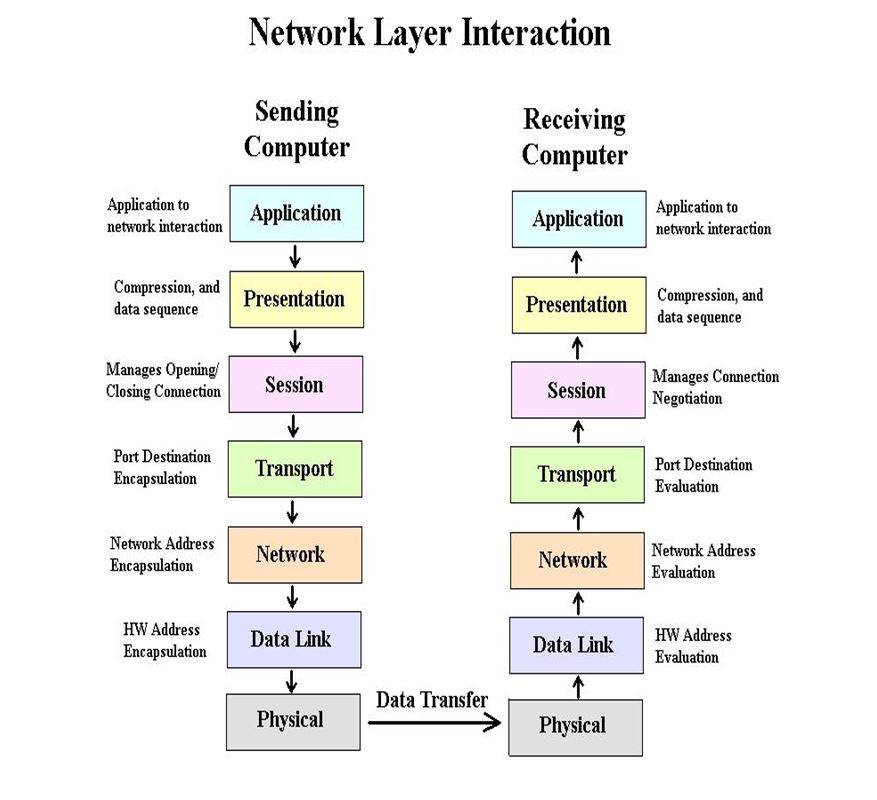The ISO Network Model Standard
The International Standards Organization (ISO) has defined a standard called the Open Systems Interconnection (OSI) reference model. This is a seven layer architecture listed below. Each layer is considered to be responsible for a different part of the communications. This concept was developed to accommodate changes in technology.

1. Physical Layer – The actual hardware.
2. Data Link Layer – Data transfer method (802x Ethernet). Puts data in frames and ensures error free transmission. Also controls the timing of the network transmission. Adds frame type, address, and error control information. IEEE divided this layer into the two following sublayers.
- Logical Link control (LLC) – Maintains the Link between two computers by establishing Service Access Points (SAPs) which are a series of interface points. IEEE 802.2.
- Media Access Control (MAC) – Used to coordinate the sending of data between computers. The 802.3, 4, 5, and 12 standards apply to this layer. If you hear someone talking about the MAC address of a network card, they are referring to the hardware address of the card.
3. Network Layer – IP network protocol. Routes messages using the best path available.
4. Transport Layer – TCP, UDP. Ensures properly sequenced and error free transmission.
5. Session Layer – The user’s interface to the network. Determines when the session is begun or opened, how long it is used, and when it is closed. Controls the transmission of data during the session. Supports security and name lookup enabling computers to locate each other.
6. Presentation Layer – ASCII or EBCDEC data syntax. Makes the type of data transparent to the layers around it. Used to translate date to computer specific format such as byte ordering. It may include compression. It prepares the data, either for the network or the application depending on the direction it is going.
7. Application Layer – Provides services software applications need. Provides the ability for user applications to interact with the network. Many protocol stacks overlap the borders of the seven layer model by operating at multiple layers of the model. File Transport Protocol (FTP) and telnet both work at the application, presentation, and the session layers.
You can also learn more about The Internet Model, TCP/IP or DOD Model
